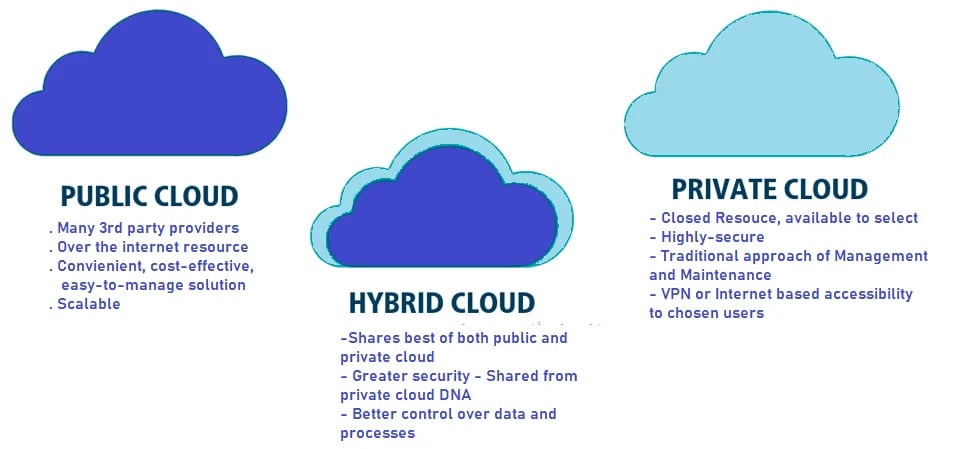What is Jamstack? The static website revolution upending web development
[ad_1]
Jamstack is a well known net enhancement philosophy that aims to pace up both internet growth and the time it usually takes to download a internet site. Drawing from devops and CI/CD, Jamstack upends lengthy-held approaches for developing interactive internet internet pages, shifting load-time code execution absent from website servers and towards in-browser JavaScript and external expert services accessed by means of APIs. The conclude final result is a developer-friendly solution to developing static websites that render incredibly rapidly and can be conveniently customized for various platforms.
The Jamstack architecture
Jamstack is a internet application architecture based mostly on 3 pillars, which supply the initials in its identify: JavaScript, APIs, and markup. World wide web pages on a Jamstack web-site consist of typical markup language, so they can be built and tested anywhere, devoid of dependencies on application servers or server-side systems like Node.js. Any interactive functionality is furnished by typical JavaScript code that executes in the browser, which would make calls to reusable APIs more than HTTPS. These calls are used to entry external details or any other performance that can’t be constructed into the website web page itself.
To recognize why Jamstack is groundbreaking, look at the LAMP stack, which exemplifies the way most builders have considered about world wide web advancement for the very last 15 a long time. LAMP stands for Linux (the running program that powers most web servers), Apache (the server application jogging on those Linux machines), MySQL (the database where net application knowledge is saved), and PHP/Perl/Python (the language employed to compose the server-side code). When you position your browser to a LAMP-dependent web site, the internet server executes the server-side code that generates the web website page on the fly, drawing data as desired from the MySQL database.
The LAMP architecture allows builders create dynamic and interactive internet sites, but it also requires a effective web server—and the a lot more site visitors a web-site receives, the far more server-aspect computing power it requirements. Even with a absolutely featured server, dynamic world wide web web pages can consider a long time to create and load. In a earth of folks with shorter notice spans, who are normally browsing the world wide web on their phones, that hold off has grow to be a major suffering position.
Jamstack was born as section of the static website movement, which arose in the mid 2010s as a reaction against this standard model of how a web-site really should perform. To fully grasp Jamstack, you need to understand the technology behind static web sites.
Static internet sites and Jamstack
If you experienced to describe to a complete newbie how the website works, it might go anything like this: Somewhere in a world-wide-web server’s filesystem there are HTML data files, available by HTTP addresses, which a world wide web browser downloads and then interprets to develop a net web page. But that is a description of a static web page: It assumes the HTML files already exist when the world wide web browser goes searching for them. But considerably of the world wide web above the previous decade was dominated by dynamic web-sites, which make HTML data files on the fly in reaction to world-wide-web requests, frequently dependent on parameters passed to the website server via forms or in the URL itself.
Static site turbines
In the incredibly early times of the web, when world-wide-web pages were being invariably static, many net builders wrote HTML code by hand. As world-wide-web web pages grew more advanced, tools like Macromedia’s Dreamweaver arrived and started to create static HTML webpages programmatically. As the static web-site motion took off, a new wave of static web-site generators started to arise, including Gatsby, Hugo, and Jeckyll. Unlike WYSIWYG applications like Dreamweaver, static internet site turbines are command-line pushed and designed to integrate properly with CI/CD processes. HTML information are produced by these instruments, generally based mostly on written content published in Markdown, and mechanically uploaded to a edition management repository like GitHub. As these files are marked prepared for output, static web pages on the stay web site are mechanically current.
Articles delivery networks
An significant matter to hold in head is that static in this context doesn’t suggest uncomplicated net 1. pages that are not interactive. These internet pages can consist of state-of-the-art JavaScript that executes in the browser and tends to make API calls to databases, server-aspect operation, or hosted serverless functions. But simply because none of that execution takes place on the world-wide-web server, a static internet site doesn’t have to have an industrial-driven world wide web host finish with a database. Quite a few static web sites are deployed to articles delivery networks, or CDNs, where written content is mirrored on various servers all over the entire world in purchase to be shipped rapidly to people any where.
Mathieu Dionne, advertising lead at Snipcart, describes the early times of this new environment of static internet websites in a web site put up, and mentions that all over 2015, “the Netlify founders … had just appear up with the expression ‘Jamstack’ to function around the damaging connotation of ‘static internet.'”
We have explained the Jamstack approach through this area. Now, let us briefly discuss Netlify and its role in the Jamstack ecosystem.
Netlify and Jamstack
Netlify is a cloud computing and world wide web web hosting company, and its cofounder, Mathias Biilmann, coined the expression Jamstack. Netlify’s solutions are tailored to consumers who want to build web sites primarily based on the Jamstack philosophy.
Netlify claims to have cracked a distinct dilemma that had been holding again static websites, which is cache invalidation. Databases-pushed dynamic sites may perhaps take in a great deal of server sources, but you can be certain that they’ll provide up the most up-to-date version of your internet site to any visitor who stops by. Mainly because Jamstack sites are typically hosted on the a number of distributed servers of a CDN, updates are much less uncomplicated. It can get anywhere from a handful of minutes to hrs for every single CDN server to determine out that its cached model of the web site is no extended legitimate. To get the job done close to this problem, Netlify’s CDN presents quick cache invalidation for HTML files.
In the many years considering that Netlify lifted the Jamstack flag, the organization has employed the know-how as the spine of its PaaS providing, providing a articles platform for huge providers like Nike and Peleton.
Jamstack with Gatsby
Netlify isn’t the only web hosting provider in the Jamstack space, and it does not have any type of trademark or proprietary manage in excess of the term. A wide variety of Jamstack web hosting and deployment methods are available, and most of the huge
cloud providers are having in on the action, such as Amazon World wide web Products and services, Google Firebase, and Microsoft Azure. Other, additional specialised companies have also entered this room, like Gatsby, Inc., creator of the static web-site generator of the similar name.
Gatsby (the corporation) has built a large-traveling expert services giving on the again of the Gatsby website generator. For the reason that of its open supply roots, the Gatsby internet site generator is also supplied by other services companies, such as Netlify.
The headless CMS
Of study course, acquiring a web site constructed and hosted is just the beginning, as you know if you’ve got ever had to take care of a website. You also will need a way to make new material and include it to your internet site. Due to the fact the individuals performing that ordinarily aren’t programmers, they’ll require a consumer-friendly tool—namely, a content administration system, or CMS. Traditional CMSes, like WordPress, supply a back again-end consumer interface (UI) exactly where you can enter internet site information, regulate a database in which that information is stored, and construct dynamic internet internet pages that present that written content in response to browser requests.
CMSes for Jamstack web-sites do the job differently, and they are typically recognized as headless. A headless CMS offers a UI for getting into and running written content and a database or other suggests of storing it, but does not alone make HTML code for a browser to parse. As an alternative, the website’s static HTML web pages use JavaScript to make calls to the CMS’s APIs, and the CMS returns the articles in a format that JavaScript can turn into a world-wide-web site.
This program totally separates articles from presentation, which of course is a longstanding ideal of programming. Due to the fact the CMS has an obtainable API, several world-wide-web webpages can simply use it. For occasion, if you have designed different cell, desktop, and smartwatch variations of your internet site, all of these variations can accessibility the exact same content saved in the CMS.
Netlify, as you may possibly hope, has its very own presenting in this house, known as NetlifyCMS, but there are other choices out there developer Nebojsa Radakovic breaks them down in his introduction to headless CMSes. There are a good deal of up-and-comers on that checklist, as effectively as one particular incredibly common name. Even though we made use of WordPress as an case in point of a common CMS, it can also be operate as a headless CMS to power a Jamstack internet site.
Why use Jamstack?
We have touched on several of the positive aspects to employing Jamstack but it is really worth recapping them, now that you have a entire photograph:
- Velocity: Static web sites load far more quickly—and that just isn’t just a issue of benefit. Google penalizes gradual web pages by lowering their research rank, and consumers accustomed to quick responses often abandon ecommerce transactions if techniques are gradual to load.
- Developer expertise: Builders can build static web sites working with the devops approaches that have reworked the industry’s procedures and productiveness. And the Jamstack philosophy produces web page stacks that cleanly separate concerns, allowing for builders to emphasis on their areas of specialization: front-conclusion designers and builders can build sites devoid of needing to be fluent in a server-side language, when back again-finish builders can concentration on APIs. Written content questions are totally managed in the realm of the CMS.
- Overall flexibility: Static web-sites can be hosted by regular internet servers, CDNs, specialized providers, or some mix of the three. And mainly because headless CMSes interact with entrance finishes by way of APIs, you can easily build web-sites for numerous platforms that share the same information.
When not to use Jamstack
With all people rewards, it nevertheless requirements to be claimed that Jamstack just isn’t for absolutely everyone. The flipside of Jamstack staying tailored to developer requirements is that, if you want to operate a Jamstack-dependent web-site, you will be extra reliant on builders than you could possibly want. This is not so terrible for firms that presently have or are ready to hire a dedicated website development workforce with the capabilities important for Jamstack. But lots of smaller sized stores are accustomed to making use of off-the-shelf commercial or open supply software program that lets them operate their web-sites with very little have to have for working day-to-working day developer involvement. Ecommerce sites, in unique, are likely to rely on a wide range of plugins and libraries developed above the several years for standard website internet hosting remedies their Jamstack equivalents usually are not as widespread or experienced, that means that Jamstack is not often fantastic for ecommerce.
Is Jamstack popular?
Despite the hype bordering it, Jamstack at present backs a quite little sliver of all internet sites. The Website Almanac estimated that, in 2021, web sites designed by static website turbines (just about all of which would have been designed together the strains of the Jamstack philosophy) designed up only about 1 percent of all sites. That explained, Jamstack is in a period of fast advancement, with its industry share increasing by a issue of far more than two each individual 12 months for the previous three many years. A single massive sign of escalating developer desire in the technological know-how: about a 3rd of Jamstack builders are really new to the scene, obtaining less than two many years of working experience.
Jamstack tutorials
Looking to go further? Examine out these Jamstack developer tutorials:
As soon as you’ve mastered the basic ideas outlined here, you will be all set to use Jamstack concepts and technologies for your internet websites. Delighted learning!
Copyright © 2022 IDG Communications, Inc.
[ad_2]
Supply backlink






